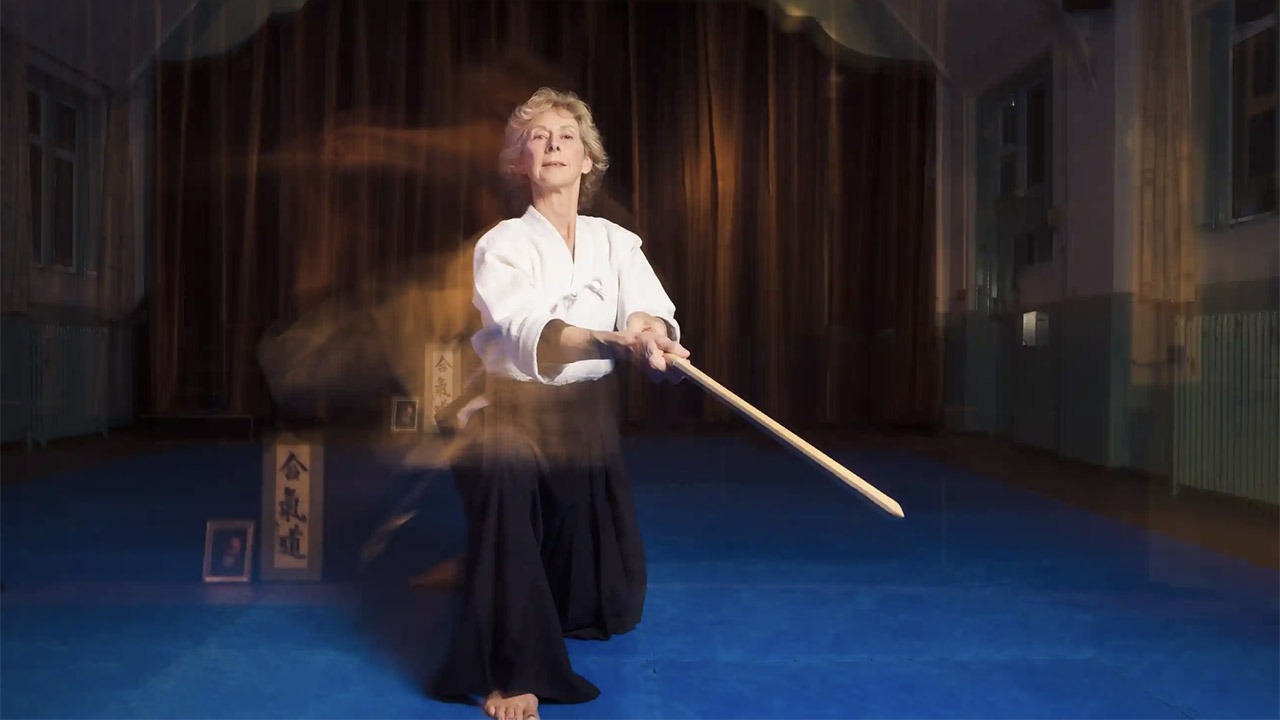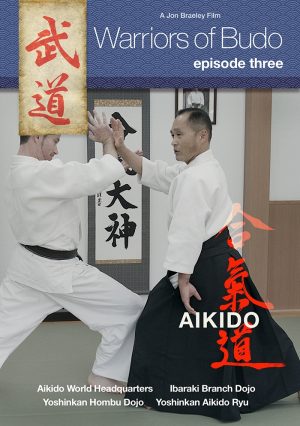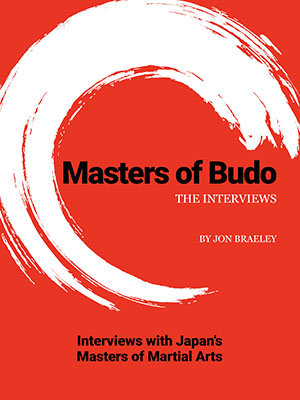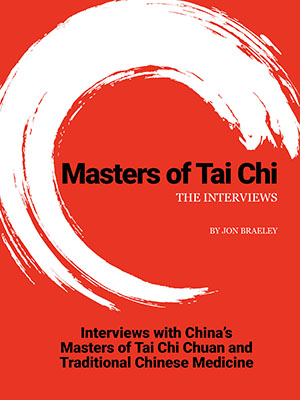Morag Warrack took up Aikido in her sixties. Reprinted from The Guardian
Our introduction
Why bother with Aikido… or any traditional martial art for that matter? If you have an internet connection and an interest in martial arts you cannot avoid the critics of Aikido on YouTube or social media when the discussion turns to what martial art works.
By “work” the naysayers always mean winning in a fight. This is usually their only measurement of how to rate a martial art. If however, you practice long enough in a traditional martial art, something happens along the way that will change this point of view. You just need to get to that point in your martial art journey to discover the underlying purpose of a martial art. Unfortunately many students give up before this happens. Our Warriors of Budo release of Aikido is a good start to understanding the art of Aikido.
So that’s why I read with avid interest in the Guardian newspaper this weekend about an elderly lady in the UK who started practicing Aikido. Obviously at the age this lady started, she did not take up a martial art to help her win fights! At my own karate dojo, I have had young and old students start classes for a variety of reasons which have included Parkinsons’ disease and Autism.
So I decided to post this story in full here so you can decide if anyone should bother with Aikido. Or any traditional martial art. You can read the original article here.
A new start after 60: I fought off four attackers
and earned my aikido black belt
Morag Warrack, 68, was so shy it took her a year to pluck up the courage to take her first aikido lesson. Now she’s giving them.
In 2014, a year into her retirement, Morag Warrack found herself in a village hall in the Surrey hills, surrounded by middle-aged men throwing each other on to the floor. “I was terrified and thought all these blokes would be shocked by an old woman walking in,” she says. “The teacher encouraged me to stay and I realised they were all kind and curious about me being there. That was my first experience of learning aikido.”
At 59, Warrack had recently handed in her resignation as an art teacher at a local girls’ secondary school after becoming exhausted from the demands of the job, as well as caring for two elderly parents. She began filling her free time with painting colourful landscapes and was reading up on mindfulness practices. “The more I looked into mindfulness, the more aikido kept coming up,” she says. “These books were recommending it as a way to connect the mind, body and spirit, as well as a method for better identifying with others.”
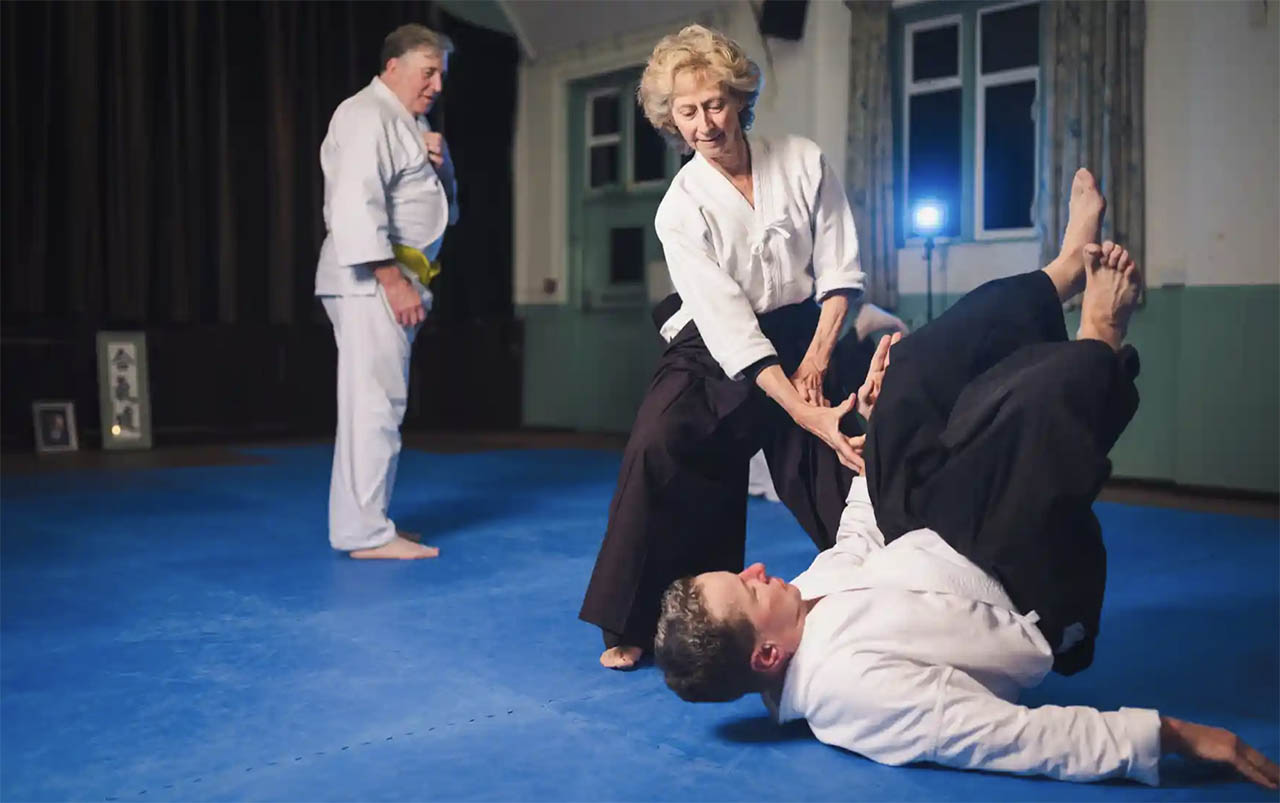
Morag Warrack at Rusper village hall in West Sussex. Photo: Alecsandra Raluca Drăgoi/The Guardian
Intrigued by how a martial art could cultivate a better state of mind, Warrack found a local class where she could take a beginners’ session. But it was a year before she drummed up the courage to actually attend. “I’ve always been shy,” she says. “I’ve never been especially active either, so after that first session I didn’t go back for three weeks and then I probably didn’t smile for the first few months of sessions.”
Despite the struggle, Warrack kept returning. First learning standing stances and ways to channel her “ki”, or energy, she found her classmates to be patient and encouraging. Gradually emboldened as she learned to tune into her body, she started attending classes two or three times a week in an effort to pick up the moves faster. “You have to learn how to fall properly and roll, which I found hard,” she says. “On evenings off, I’d even go to the local golf green and practise rolling around in the dark!”
While her husband and two children were supportive, they weren’t tempted to join in. “They just thought: Mum’s off on one again,” she says. Warrack carried on and, after two years of practice, she began moving up the graded system of belt rankings and noticing a change in herself. “Aikido was making me way more confident,” she says. “Since my reactions got quicker, my balance was better and my coordination improved. I had a real understanding of my own body and it became a metaphor for how to be in life; how to avoid attack without hurting the other person.”
By January 2019, Warrack was determined to achieve her black belt and began training with the only other person in her class who was at the same level as her: a 6ft 3in Metropolitan police officer who was also a black belt in karate. “It was a very odd pairing, but we learned so much from each other,” she says. “Not least because he’s so strong and so I had to learn how to use my skills rather than strength against him.”
In December 2021, Warrack, at the age of 66, took her black belt test. For 20 minutes, she had to defend her position against consecutive attackers before facing the final randori, where four people attack at once. “One guy kicked me and split my lip,” she laughs. “It made me so angry, but that’s what I needed to keep going.” She passed, making her one of the oldest people to achieve an aikido black belt in the UK.
Now 68, Warrack is helping to teach beginners, one of whom is a 73-year-old who has taken her place as the oldest person in the group. “I’ve been amazed at how strong I am,” she says.
Writer: Ammar Kalia. Reprinted from The Guardian.

